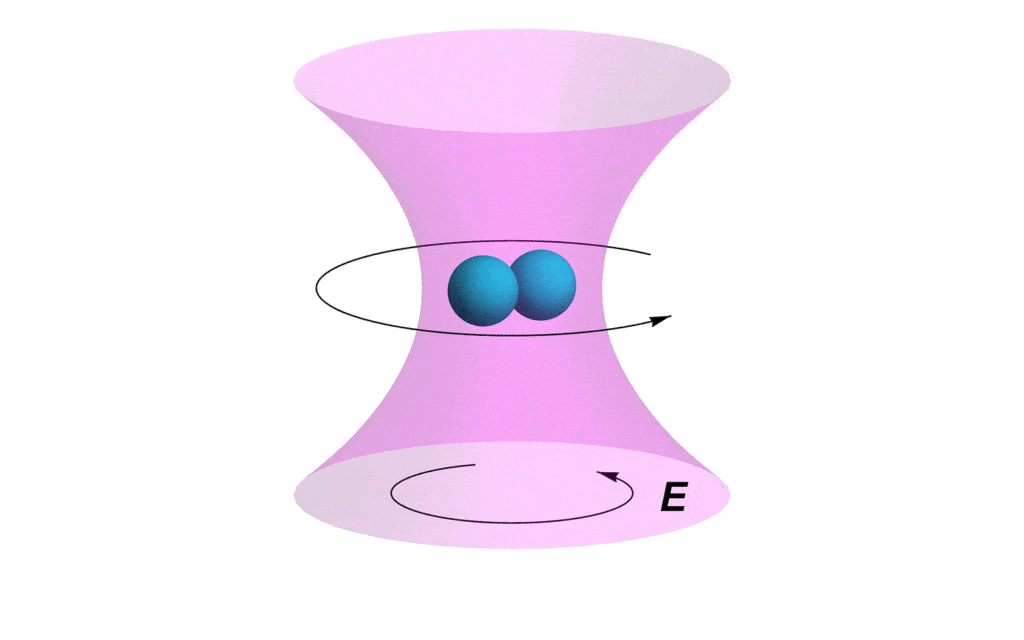
Credit: Tongcang Li/Purdue University.
A nano-dumbbell, made of two joined silica spheres and only 0.000007 inches wide (170 nm), is the fastest man-made rotor in the world. Researchers at Purdue University spun the rotor a staggering 60 billion times per minute, which is about 100,000 times faster than a high-speed dental drill.
Apart from being an extraordinary feat of science and engineering, the observations of the rotor’s behavior could shed new light on exotic physics, such as quantum mechanics.
“This study has many applications, including material science,” said Tongcang Li, an assistant professor of physics and astronomy, and electrical and computer engineering, at Purdue University. “We can study the extreme conditions different materials can survive in.”
In the past decade, scientists have pushed the limits for the fastest spinning rotor farther and farther with each new iteration. In 2008, the record belonged to a matchbook-sized rotor, which clocked 1 million rotations per minute. In 2010, a new record was set when scientists spun a slice of graphene at 60 million rotations per minute. Later, in 2013, a sphere measuring just one-tenth of the width of a human hair completed a staggering 600 million spins per minute.
Now, Li and colleagues have shown that it’s possible to rotate things even faster. Following the miniaturization trendline, the researchers synthesized a tiny dumbbell from silica and levitated it in a vacuum using a laser, which fired circularly polarized light. The polarized light forced the dumbbell to spin and — since there were virtually no air molecules to slow it down — it did so furiously fast, clocking 60 billion rotations per minute.
A second laser that fired linearly polarized light made the dumbbell vibrate and confined the tiny device to the same plane.
The physicists hope that their experiments might help them understand vacuum and gravity better and, ultimately, some quirks of quantum mechanics.
“People say that there is nothing in vacuum, but in physics, we know it’s not really empty,” Li said. “There are a lot of virtual particles which may stay for a short time and then disappear. We want to figure out what’s really going on there, and that’s why we want to make the most sensitive torsion balance.”
The findings appeared in the journal Physical Review Letters.









